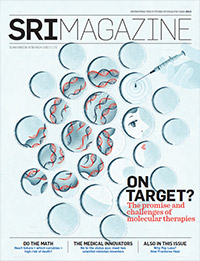Through the Wormhole

Journey into a different time in medical science
The discovery of radioactivity is owing to a stretch of cloudy days in February 1896, in Paris, France.
On the heels of Wilhelm Röntgen's discovery of X-rays, a form of radiation that penetrates solid matter, Antoine Henri Becquerel hypothesized the phosphorescent uranium salts he was studying absorbed the sun's energy and gave off X-rays. He tested the idea by placing uranium crystals on photographic plates wrapped in black paper and leaving them in sunlight. Upon developing the plates, he saw an outline of the crystals. He planned to continue these experiments, but the skies were grey those last few February days. Becquerel shoved his materials in a drawer, postponing his work until the next sunny day. On March 1, he opened the drawer and developed the plates. To his astonishment, the image (above) was strong. The uranium had emitted radiation on its own!
For this discovery, Becquerel, along with his former doctoral student, Marie Curie (who coined the term radioactivity) and her husband Pierre Curie, shared the Nobel Prize in Physics in 1903.
The legacy of this discovery is profound. Radioactive substances, the foundation of nuclear medicine, are used to image the body and treat disease. It and related discoveries paved the way for the testing and validation of procedures like radiotherapy and brachytherapy.



